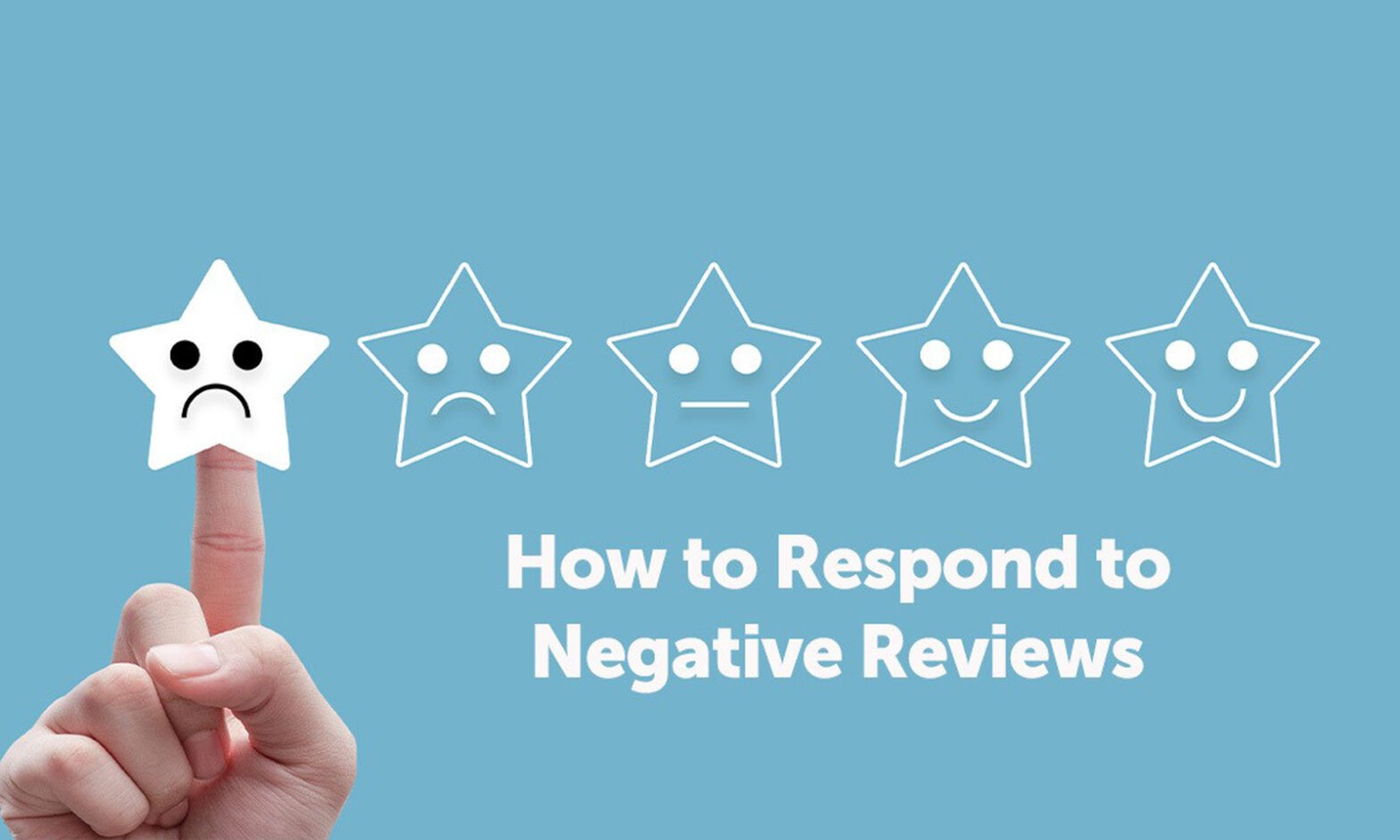You’ve worked tirelessly to deliver a consistently first-class customer experience, putting customer needs first every step of the way. So, you should only ever receive positive feedback and glowing customer reviews, right?
Not necessarily.
Unfortunately, bad reviews are simply a part of being a business owner. Even when you do your very best, things happen: an inexplicably unhappy customer, a mistake made with a product or service, a staff member having an “off” day. And in some of those situations, the challenge doesn’t end when the interaction with the customer is over – in fact, you might not even realize there is an issue until long after they’ve left.
Whatever the case, it can feel like an unexpected blow when you check your customer reviews and realize that it’s happened: a bad review. And whether the review gives fair and honest feedback or comes entirely out of left field, what you do next can make a world of difference.
Responding to Negative Reviews: The What, Why, and How
You might be wondering, “Do I have to respond to negative customer reviews?” After all, more than a few companies either ignore the review or just delete it and move on.
However, a thoughtful acknowledgment and well-formed answer to a negative review can have a far more significant impact than you might think. And actually, the proper response can turn a negative customer review into a positive thing for your business.
A negative review can have a positive effect on reputation management.
You already know that customer reviews are powerful. On platforms like Yelp and Google, users can browse businesses and read exactly what other people have experienced, good and bad alike. And if you’re wondering how many people actually read reviews, the answer is just about everyone.
But before you panic about how many people might see bad reviews for your business, here’s something you might not expect: studies show that responding to negative reviews can actually translate into a boost for your business’s online reputation. This means that receiving solely positive reviews might not be the sky-high goal you’ve always thought it was.
Interestingly, more than 80% of online shoppers are explicitly searching for bad reviews for a few different reasons:
- Firstly, a business with only fantastic, five-star feedback can seem “too good to be true.” So, users may look for negative feedback to get a feel for how authentically the company is representing itself online.
- Today’s consumers are more informed than ever, knowing better than blindly trusting advertising. About 3 out of 4 people avoid ad content altogether, possibly preferring to seek out new products and services of their own volition. In this search, they want to understand exactly where a company’s pain points might be – because they certainly don’t believe an ad that says there are none.
- Customers want to see how you, as a business owner, will react to negative feedback. Do you get defensive and argue with the online user? Do you brush off their concerns? Or, do you take an open and honest approach to solve the issue and demonstrate that you care? More than half of people expect to see a response to all online reviews, so ignoring them isn’t going to be the right move.
With an effective response to a bad review, you can check all of the above boxes (and many others). Users have the chance to see that there is a “real” person behind the business and that you are committed to conducting your business with integrity.
When they’re able to observe a business that values customer feedback and takes appropriate action, it can count for a lot – and a single bad review can be worth far more than a dozen generic five-star ratings.
How to Respond to Negative Reviews
Every business owner knows that your interactions with customers always count, even after you’ve provided your product and/or service. The connection doesn’t end immediately after the transaction is complete.
So, replying to customer reviews should be considered a part of your essential operations. And although it’s fairly easy to formulate a response to a positive review, coming up with what to say to negative feedback can be trickier – but we have you covered.
Here are seven simple steps to write responses to negative reviews online.
- Respond promptly.
- Acknowledge what the customer is saying.
- Apologize and express empathy for their frustration.
- Be accountable.
- Offer an explanation if applicable, but avoid making an excuse.
- Invite the customer to continue the conversation offline.
- Remedy the situation appropriately.
Let’s take a closer look at these steps in practice.
- Respond promptly.
Posting a response to a bad review shouldn’t be an afterthought; it should be a major priority. The longer a bad review is online with no acknowledgment, the worse it makes your business look. Remember, users expect you to respond – so when you don’t do it right away, it reflects poorly on your business.
Aim to answer all reviews within 24 to 48 hours. Of course, this doesn’t mean posting a generic response; instead, take the time to put together a thoughtful response that actually means something.
- Acknowledge what the customer is saying.
It’s normal to feel defensive, frustrated, or even somewhat angry after receiving a bad review. After all, you’re only human – a human that’s probably worked very hard on your business.
Take a moment to “cool off” if needed, and remember that no business has ever had a perfect record of flawless customer feedback. Keep your emotions in check, and try to be as objective as possible in reading the review and responding. Acknowledge their frustration surrounding the bad experience, and demonstrate a willingness to resolve the issue.
Understanding and empathy go a long way (a good rule for business and life in general), especially when extinguishing the flames set by an angry customer leaving a bad business review.
- Apologize and express empathy for their frustration.
So, you’ve acknowledged the grievance, and now it’s time for the challenging part: saying you’re sorry. Issuing an apology is you taking the high road, showing your dedication to respect and customer service above all.
Granted, you might not feel as if you did anything necessitating an apology. But remember that apologizing isn’t the same as agreeing with everything the review says. You might write something as simple as, “We sincerely apologize that you had a negative experience. Customer satisfaction is important to us, so we will be doing everything possible to ensure this does not occur again.”
- Be accountable.
If you’ve ever been upset with someone, you already know that excuses can make the situation even worse. Even if the customer’s dissatisfaction isn’t actually your fault, the goal is to highlight your customer-centric business ethics – not to get defensive.
Taking responsibility in your review response might look like, “We are so sorry for the inconvenience and appreciate you taking the time to share your feedback. We are certainly disappointed to hear that we missed the mark and will be looking into this issue as soon as possible.”
- Offer an explanation if applicable, but avoid making an excuse.
Depending on the scenario outlined in the review, an explanation might be in order. For example, maybe the customer is frustrated about slow delivery times. However, you know that an issue with the national supply chain was actually the cause, not simply poor service.
In your response, you can offer some clarity and explain the situation – but whatever you do, don’t try to justify what happened. The goal is to help the customer understand what happened, not excuse yourself. Regardless, you’ll still want to apologize and attempt to fix the situation.
- Invite the customer to continue the conversation offline.
An interaction that takes place online might as well be broadcast to the world because just about anybody can see what’s going on. After your initial response, consider asking the customer to take the discussion offline.
You might suggest that they connect with you via phone or email, or provide a link to your customer chat feature. Ultimately, the goal is to validate the customer and avoid a public showdown.
- Remedy the situation appropriately.
Finally, offer to make it right. If the negative review addresses something that can be fixed, then fix it – it really can be that straightforward. For example, you might offer a refund, provide them with a free product or service to make up for their bad experience, or find another way to satisfy the customer.
Sometimes, an effective solution can turn into a positive review, and an upset individual can become a loyal, lifetime customer.
Get Professional Reputation Management for Your Business
Staying on top of your business reputation can present more than its fair share of challenges, but that doesn’t make it any less crucial. Instead of juggling reputation management with all of the other tasks you have to tackle as a business owner, why not hire a professional team to get the job done?
V Digital Services provides a comprehensive portfolio of digital marketing services, including reputation management, social media management, and more. We can help you develop and implement a smart approach to online reviews, strengthening your response and turning negatives into a positive. In addition, we can make sure that there’s plenty of good to outweigh any bad, using effective marketing strategies to build brand awareness and get your business name out there.
For more information about how to manage your reputation as a business, connect with the V Digital Services team today!
Photo image credits: 19 STUDIO, Blue Planet Studio, kelvn, Rawpixel.com





 PREVIOUS
PREVIOUS
I agree that negative reviews can turn positive into other customers. We all know no one is perfect and in complains with the deliveries of products, customer service, etc. we can address or make action towards their complains and make sure everything will be better in the next purchase through reviews. Showing the customers, how good the reputation of the company is by properly solving the problems and not tolerating them. Thanks